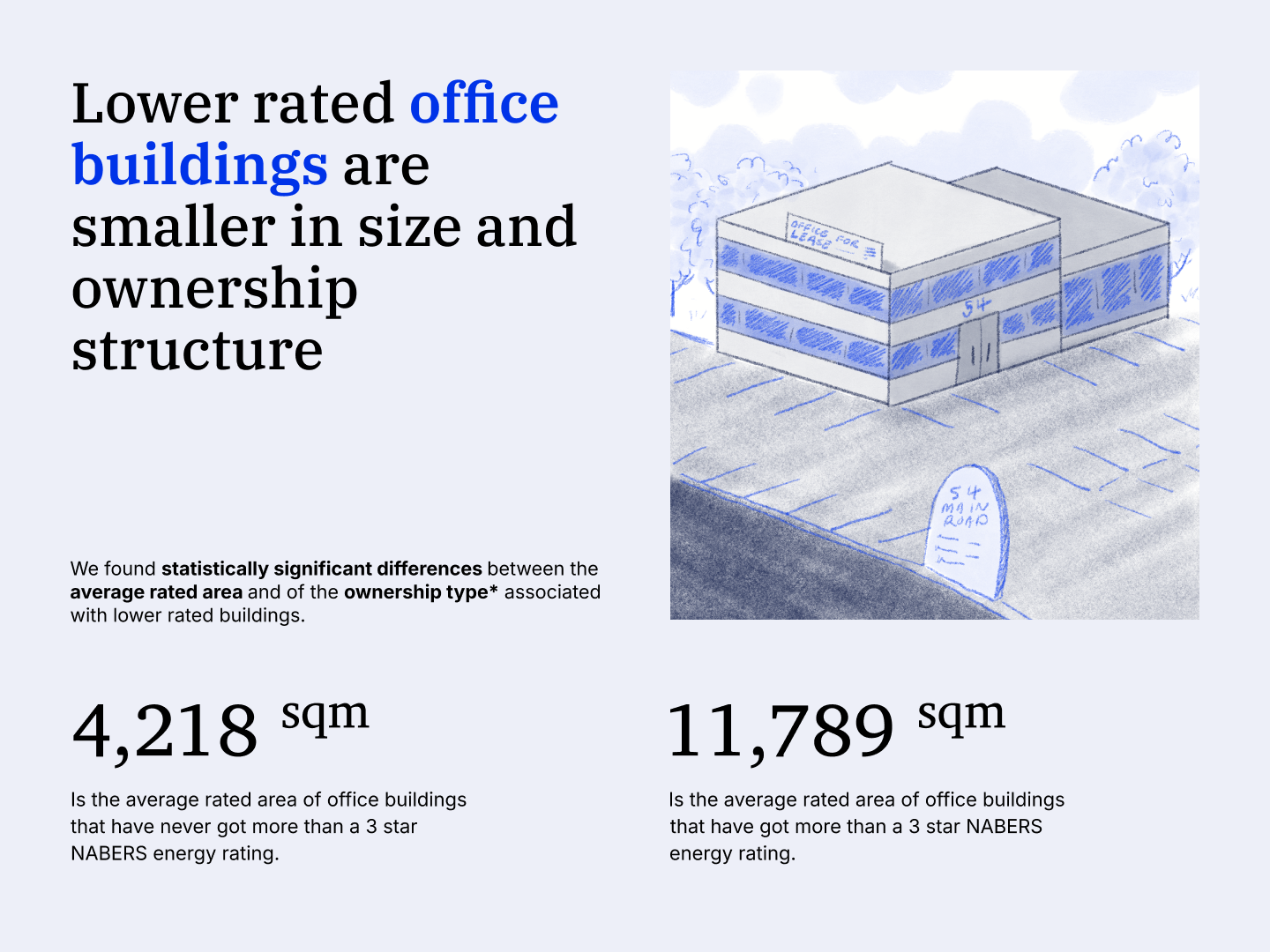Department of Climate Change, Energy, the Environment and Water
Unlocking Energy Efficiency Investments in Commercial Buildings
Why are some building managers driven to improve the energy efficiency of their buildings while others struggle to make these improvements? Paper Giant researched the motivations and roadblocks influencing energy ratings in commercial buildings across Australia.

Outcomes
- Mixed-method research project, undertaken in consultation with client stakeholders and in partnership with subject matter experts from Arup
- Clear strategies and recommendations for policy development, data collection and education initiatives based on research findings
- A portfolio of assets (3x case studies) to inspire and educate building owners about the possibilities and impacts of energy-performance change in buildings across Australia
Understanding the behavioural, financial and social drivers behind choices to improve building energy performance
The Department of Climate Change, Energy, the Environment and Water (DCCEEW) wants to improve energy efficiency in commercial buildings nationwide to reduce environmental impact. They’ve implemented a number of incentives like the National Australian Built Environment Rating System (NABERS), which measures the environmental performance of Australian buildings and tenancies, and the Central Business Disclosure Program (CBDP) for large office buildings. To understand why some building managers and owners embrace incentives while others do not, DCCEEW partnered with Paper Giant and sustainable-building experts Arup for in-depth research.

We developed a classification framework for buildings based on qualitative research with building managers and owners, and reported on key findings for each.
Combining qualitative and quantitative research
We analysed existing NABERS data to identify the specific characteristics of buildings with lower ratings. Findings informed a comprehensive mixed-methods research strategy. We engaged participants from diverse cohorts, including owners, managers, and assessors across office buildings, shopping centres, and hotels, using an online survey to understand attitudes, motivations, barriers, and concrete steps taken to improve energy ratings. In addition, we conducted in-depth interviews with 23 respondents to gain deeper and project-specific insights.
We also prepared three detailed case studies of buildings across Australia; each case study telling the story of the building’s energy needs, the improvements implemented and their resulting performance.



We provided case studies for three buildings, which can be used by decision makers to understand the types of drivers and barriers to energy efficiency upgrades.
Smaller buildings are less efficient
Our research aimed to identify some common characteristics of poor-performing buildings, the barriers and triggers to energy-performance improvements, the types of improvements commonly made and their impact, and the specific NABERS and CBD program features that were most effective. We found, among other things, that smaller buildings are less likely than larger buildings to improve performance.
Tenant expectations were a key factor in many building managers' efforts to improve their energy performance. Additionally, owners of smaller buildings often felt that the NABERS system applied more to larger buildings, potentially hindering their engagement with energy rating initiatives.

Smaller buildings tended to have poorer energy performance.
Our findings
Insights informed recommendations for DCCEEW, shaped in collaboration with our partner Arup. These included ideas to improve data collection methods, new ways to leverage the knowledge and enthusiasm of on-site facilities managers, and the possibility of expanding existing incentive programs. The strategies aim to catalyse greater energy efficiency improvements across Australia’s commercial building sector.
A comprehensive public consultation aimed at expanding the scope of the Commercial Building Disclosure Program is currently underway. This initiative seeks to gather feedback and insights from stakeholders to enhance the program's effectiveness and reach. Detailed consultation documents can be accessed through the Commercial Building Disclosure Program Expansion Consultation.


